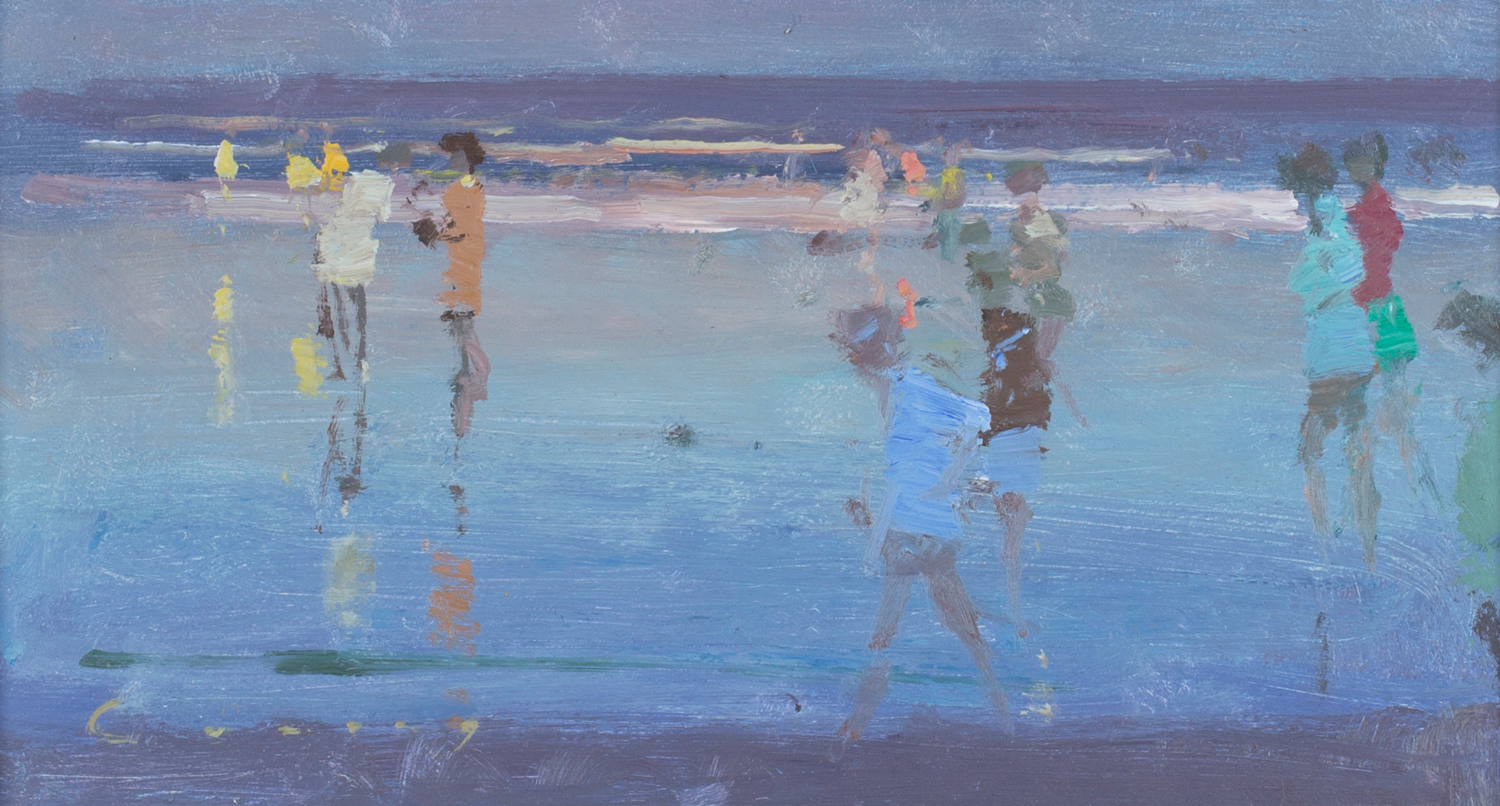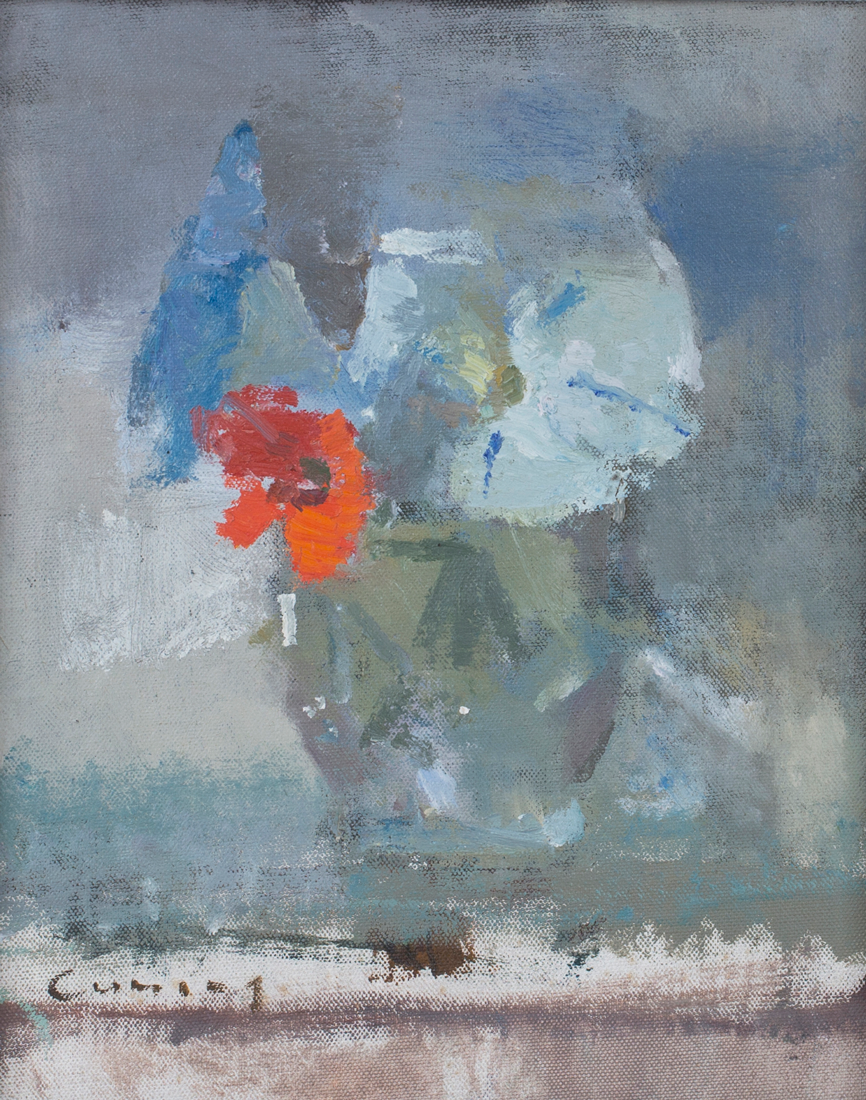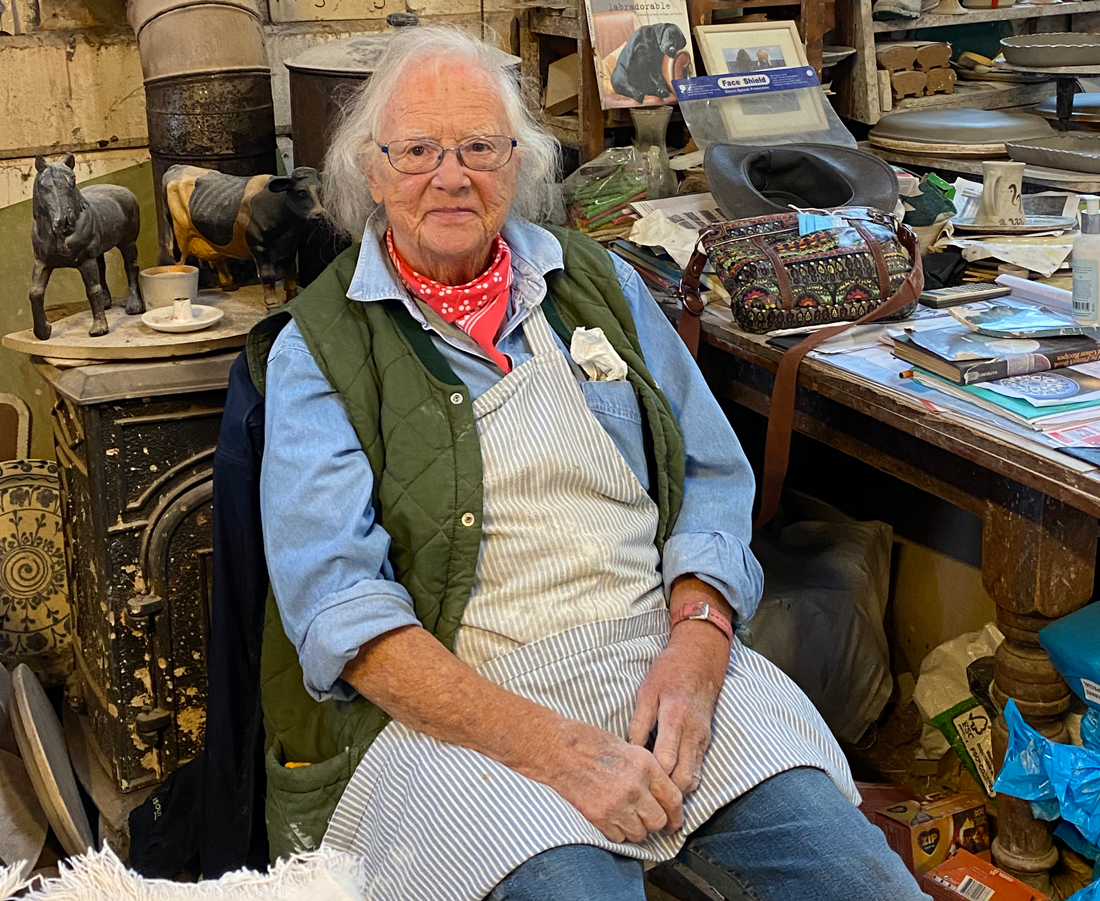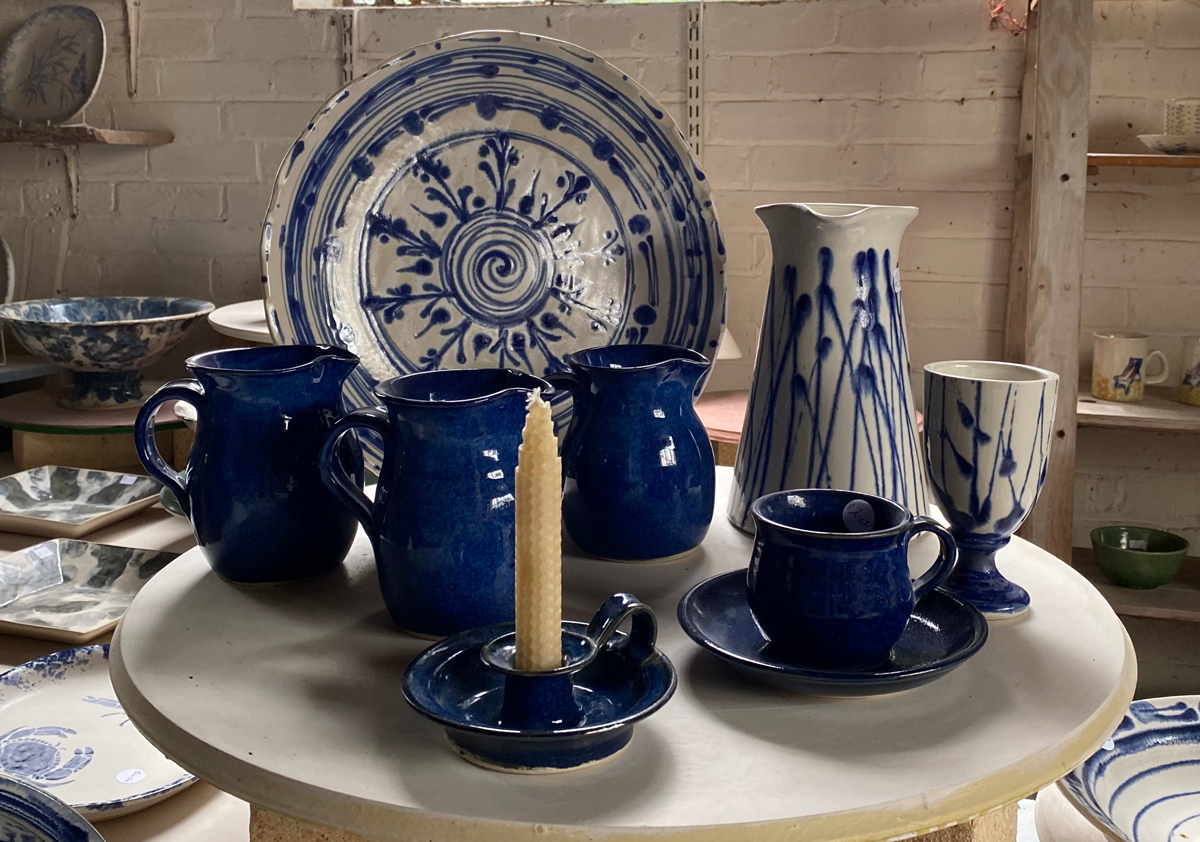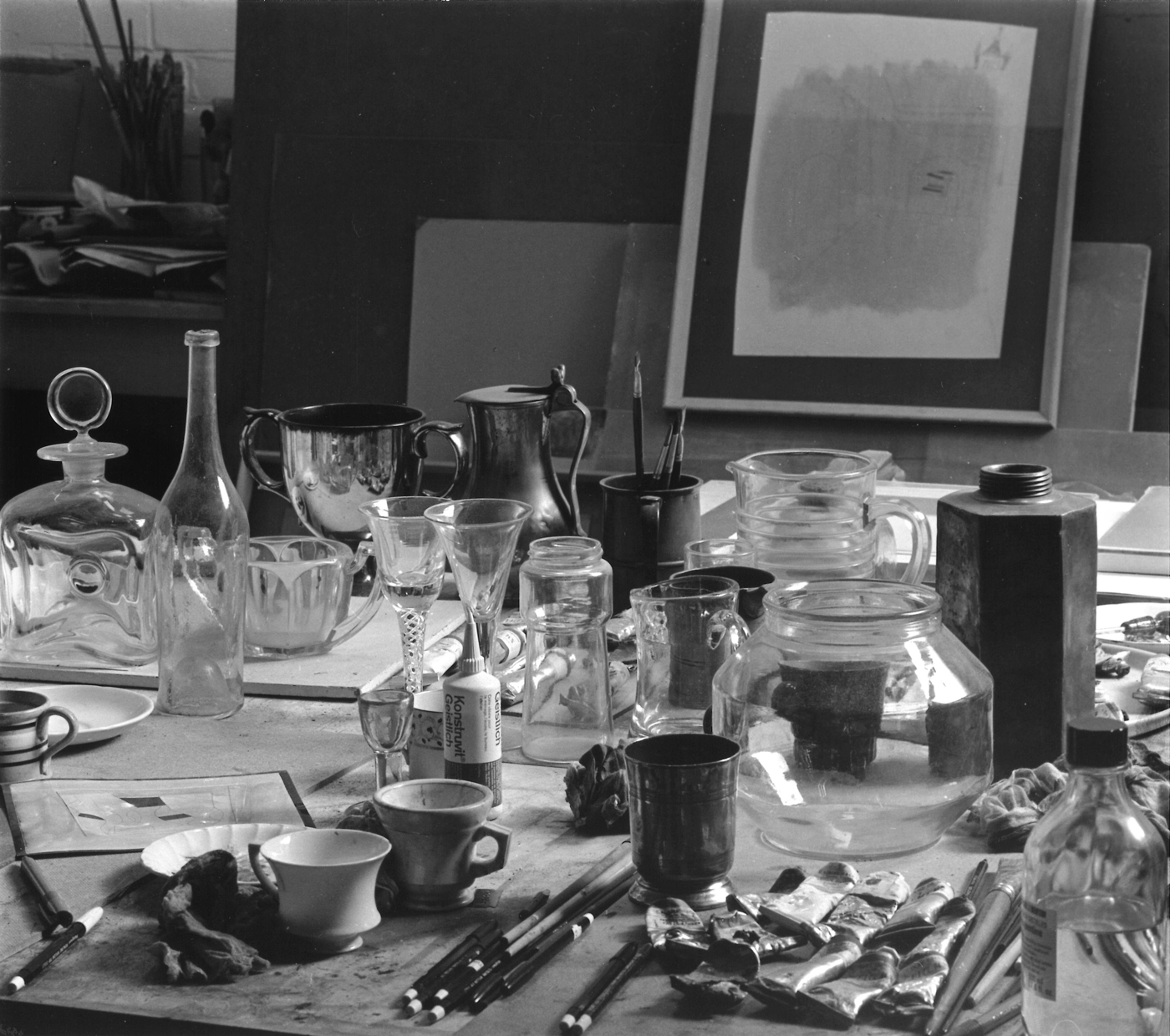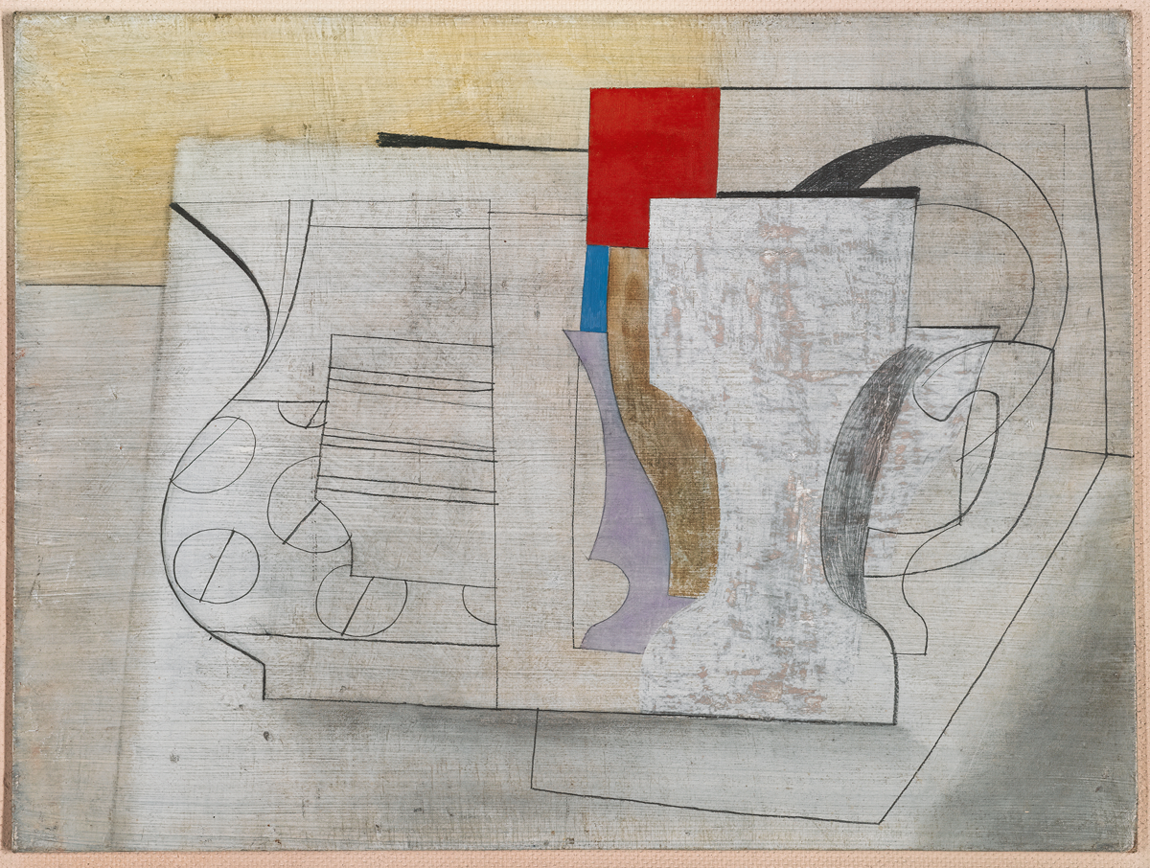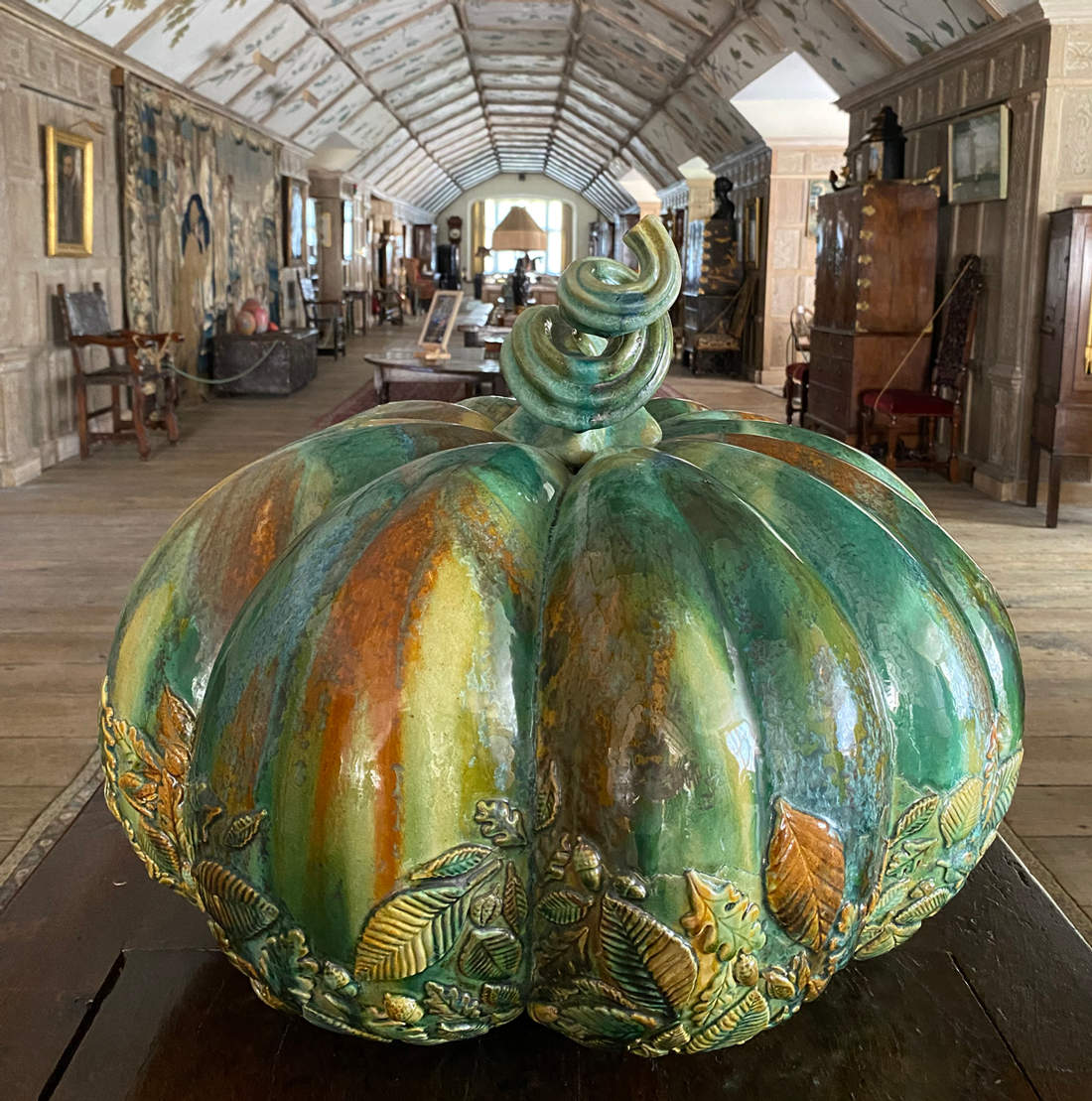
Parham House is one of the most beautiful stately homes in England. This fine Elizabethan house was saved and carefully restored by the Hon. Clive Pearson and his wife Alicia during the 1920s and ʼ30s. The collections give voice to their passion for the house and collecting.
The Great Hall at Parham is a remarkable space at the heart of the house. It bridges the ancient and contemporary with its lightly limed pale oak panelling.
The immensely long curtains hang like becalmed sails. As they hinge back against the window recesses the space is filled with light which playfully draws our eye to the familiar array of fine portraits and furniture and then to a series of visitors, objects arranged in a series of vignettes – compositions of the very finest contemporary decorative art. Colin Reid’s kiln cast, polished optical glass Colour Saturation; Open Eye works in concert with the texture and hue of the panelling and the blues in the flanking tapestries with a lyrical quality.
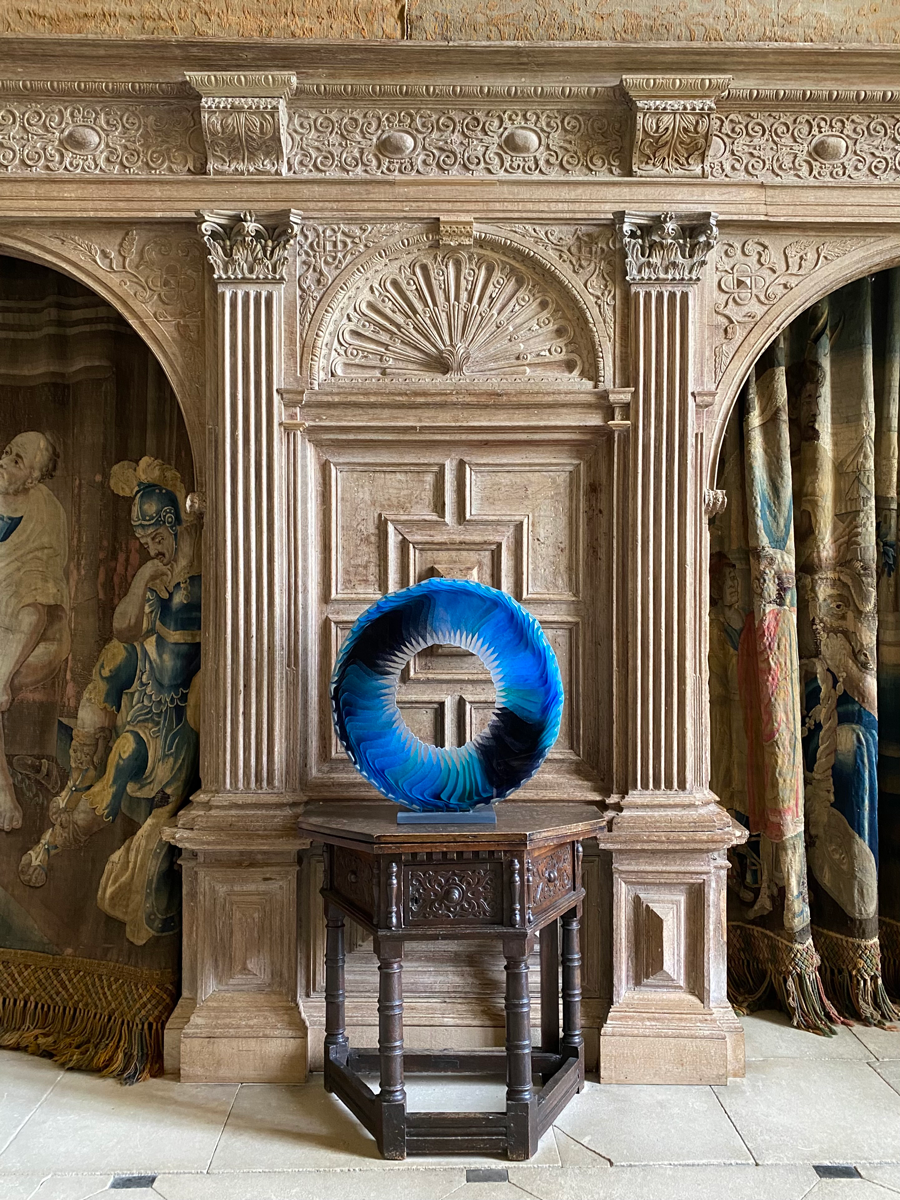
These objects represent a collaboration between the international art dealer and gallery owner Adrian Sassoon and Parham House. It was initially born out of a desire to create a virtual exhibition to share new works during lockdown which resulted in a series of beautifully conceived short films by Freddie Leyden. But with the house just reopened many of these objects have returned to delight connoisseurs and visitors to Parham.
English Country House Taste is textural and eclectic always reflecting the taste and interests of a family and often the patchwork quilt of a family’s stories and interests over generations. It is unpretentious, layered and evolving. These contemporary objects are fleetingly adding to the rich tapestry of the house and its collections.
In the third of the films the celebrated ceramicist Kate Malone is clearly moved to see her work away from the studio and in the context of Parham. She reflects on the embroideries and Parham’s collections and how they speak to her “…there’s so many loving hours in everything that’s here. The makers of these things, it’s as if they’re speaking through their craft – it’s very emotional actually.”
Kate explains “My objective is touching you in the heart not in the mind. When I’m making my work nothing else matters you lose track of time, you just want that feeling where you’re at one with the material.”
Her magnificent crystalline-glazed stoneware Sprigged Big Mother Pumpkin seems to be in conversation with Oliver Messel’s painted ceiling, the tapestries and objects in the long gallery. It allows the visitor to see this remarkable interior anew.
Parham is an optimistic place which provides a window onto our past and our future, an historical narrative from the first to the second great Elizabethan Age. It speaks to us of our own place in the extraordinary procession of human history. Whether you are visiting for the first time or returning Parham never fails to captivate and delight. To find out more about the house and exhibition and to book your tickets visit www.parhaminsussex.co.uk, and www.adriansassoon.com.
